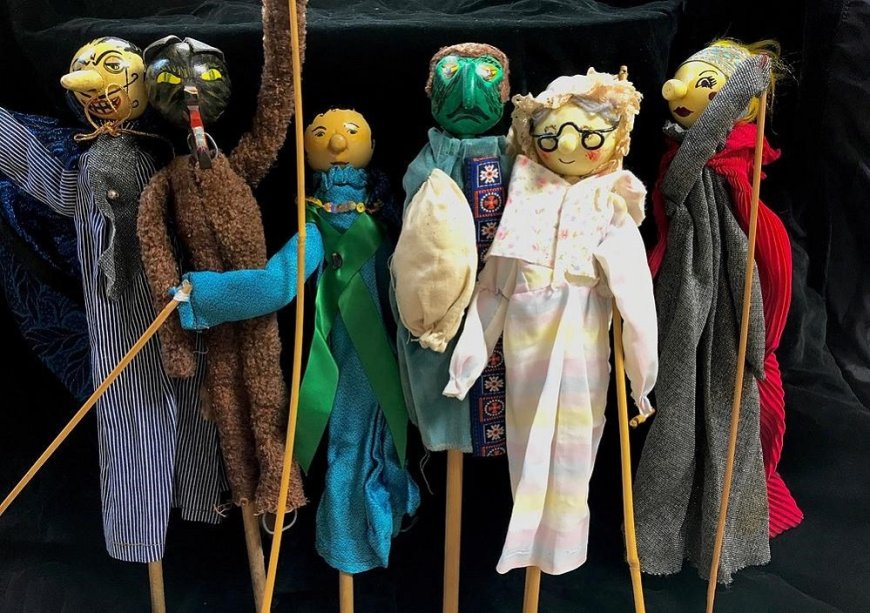Puppet therapy in working with children with special educational needs
Inclusive education: the experience of implementation in modern conditions. Puppet therapy in working with children with special

Inclusive education: experience of implementation in modern conditions A doll is not only a toy, but also a useful therapeutic or educational tool. This is especially important when the task is to help socialize, overcome fears or physical disorders of the child. How and in what situations to use a doll, says the lecturer of the Internet conference "Inclusive education: the experience of implementation in modern conditions". Puppet therapy in working with children with special educational needs.
What problems can be solved with puppet therapy?
Puppet therapy is a branch of art therapy that uses a doll as an intermediate object of interaction between a child and an adult as a method of psychocorrectional influence. The purpose of puppet therapy is to eliminate painful experiences, strengthen the child's mental health, improve social adaptation, develop self-awareness and learn to resolve conflicts in a collective environment.
Most often puppet therapy is used:
- In psychodiagnostics;
- As a therapeutic and stabilization method, for example, in working with sick children who are Temporarily in a serious condition in the hospital;
- To study the image of "I" and the development of self-awareness, awareness of their own patterns of behavior;
- For the development of self-regulation;
- To improve social interaction, development of communication skills;
- In the prevention and correction of fears, resolution of interpersonal conflicts;
- For the development of speech and thinking through the development of fine motor skills in children;
- To correct family relationships;
- In work with psychosomatics, enuresis, stuttering;
- For the formation of gender identity.
Stages of puppet therapy
Usually puppet therapy begins with the process of making dolls, which is already corrective. As they become interested in work, children become calmer, more balanced, they develop skills of concentration, perseverance, and imagination develops.
To create a doll, ask students to invent an image: themselves, a helper, an imaginary friend, who they want to be, or a problem to overcome. You can also ask students to bring their own dolls or offer a choice. The main thing is that with the help of a doll the child can tell a story (about people he knows or about situations). At this stage, the specialist notes which dolls the child chooses, and which - no.
Must Read: What is variable life Insurance
When the creation process is complete, ask the children to introduce you to the dolls. At this stage, the children name them, tell a story, and the teacher helps to make a description with open-ended questions. After the acquaintance, you can proceed to the play of fairy tales, in which the specialist has the right to intervene only if necessary or at the request of the child.
When the game is over, the specialist talks to the doll. Because in some cases (psychological trauma, shame) direct work with the problem is impossible, the doll is used as a tool to influence the child, or as the embodiment of the child. That is why, when asking questions about the doll's thoughts and feelings, gradually and imperceptibly transfer the emphasis and interpretation directly to the child.
Techniques for working with dolls
Depending on the goal set by the teacher, you can use different techniques and puppet images (heroes, thieves, authorities, objects of care, etc.). Let's look at just a few of them:
Inclusive doll. Such toys are used to foster tolerance, kindness and respect for others in the team. Purchase 1-2 dolls (figurines with crutches, a hearing aid, birthmarks, etc.) per class and work out scenarios for communicating with children with disabilities. Inclusive dolls can also be useful for a child with OOP. With their help you can solve conflicts, problems, play answers to awkward questions and more. In this way, you encourage children to tell stories about themselves or their peers, which develops the ability to evaluate themselves and others.
Pronunciation of sounds by a doll. This technique is useful for children with speech defects who are ashamed of their mistakes and pronunciation. Allow the student to put a speech therapy doll on his arm and say complex words as if on his behalf. This approach will help reduce the fear of exercise. In addition, some gloves help to demonstrate exercises for the tongue, as well as to articulate a sound.
